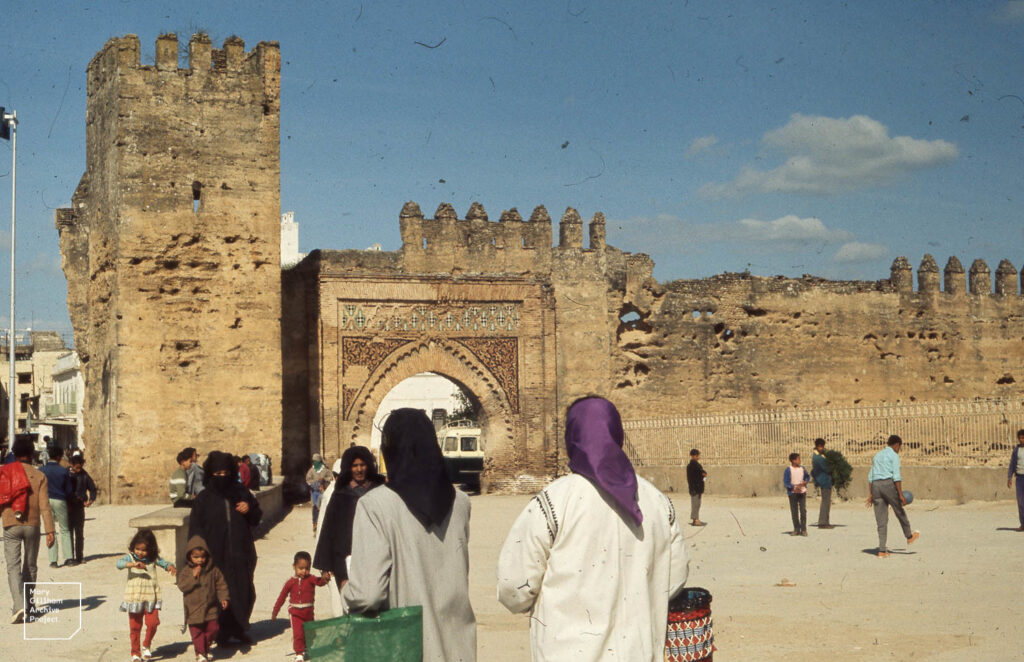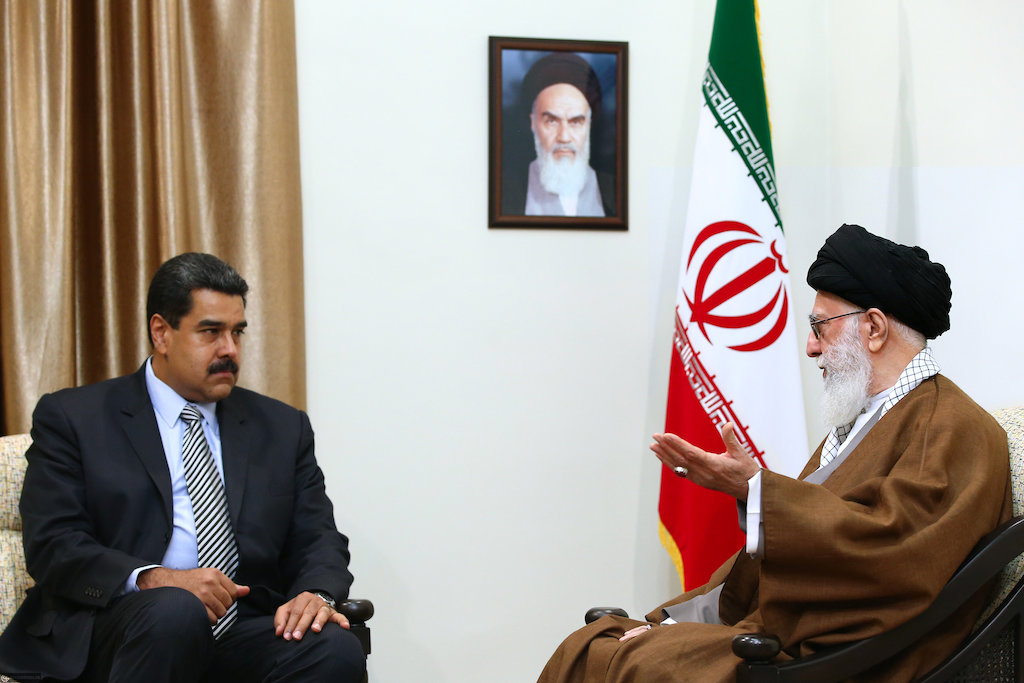FACT SHEETS
Fast Facts: Why did Israel attack Iran?
June 26, 2025 | AIJAC staff
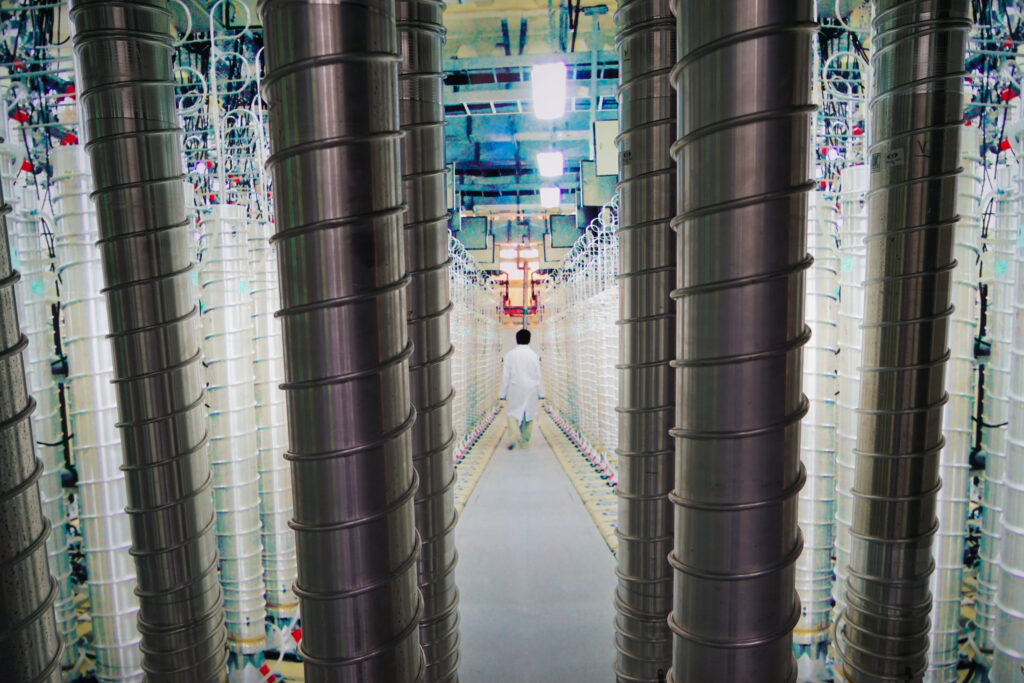
‘Fast Facts’ are snapshots of rapidly evolving situations. This specific page will not be updated, but we are monitoring developments and will issue a new fact sheet if doing so is useful.
Key points
- Israeli intelligence stated that Teheran was close to the ‘point of no return’ in its quest for nuclear weapons capability.
- Iran had substantial quantities of highly enriched uranium, for which there is no civilian purpose, and there is evidence that it had not only the technical knowledge to create a nuclear weapon quickly if it chose to pursue weaponisation, but may have even decided to manufacture components.
- Teheran was allegedly planning to start rapidly producing dozens of long-range ballistic missiles per month to create an arsenal that, within a decade, could overwhelm Israeli defences and cause mass casualties.
Contents
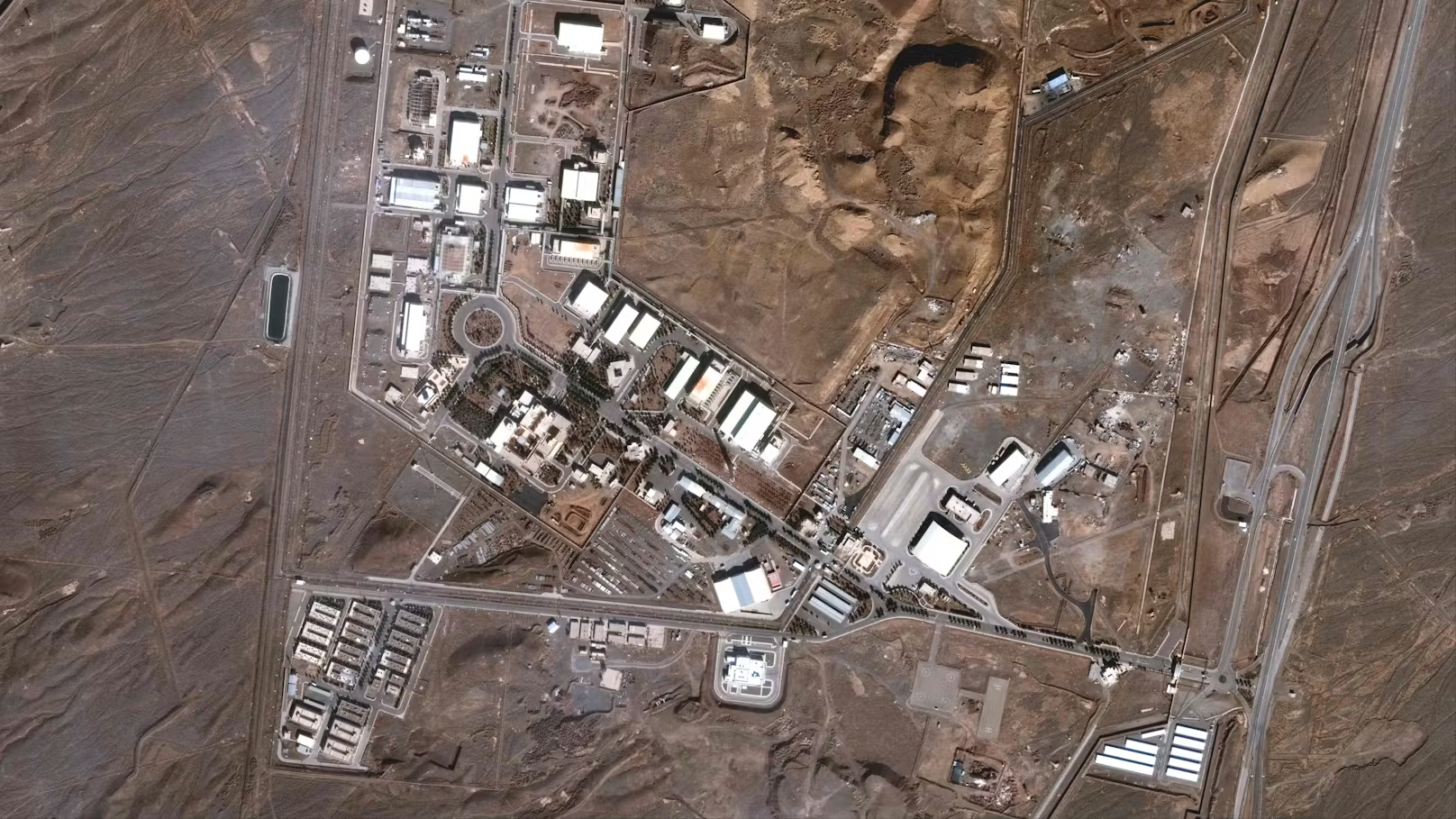
Satellite image of the uranium enrichment facility in Natanz, Iran, in February 2025 (Image: Heute)
Summary
On June 13, 2025, the IDF announced it had launched Operation Rising Lion, a pre-emptive military campaign targeting Iran’s nuclear weapons program and other military assets. Israeli Prime Minister Binyamin Netanyahu said Iran had “produced enough highly enriched uranium for nine atom bombs.”
On June 23, US President Donald Trump announced that the US had joined Israel, and had carried out a successful attack on Iran’s Fordo, Natanz and Isfahan nuclear sites.
In short, Israel acted when it did for two main reasons:
- A determination that Iran was close to the ‘point of no return’ in its quest for nuclear weapons capability
- A concern about Iran’s ballistic missile program eventually reaching a point where it could overwhelm Israeli defences and create mass casualties – even without nuclear weapons
In this fact sheet, we explore these ideas based on publicly available information.
Read more: A critical first step to stability
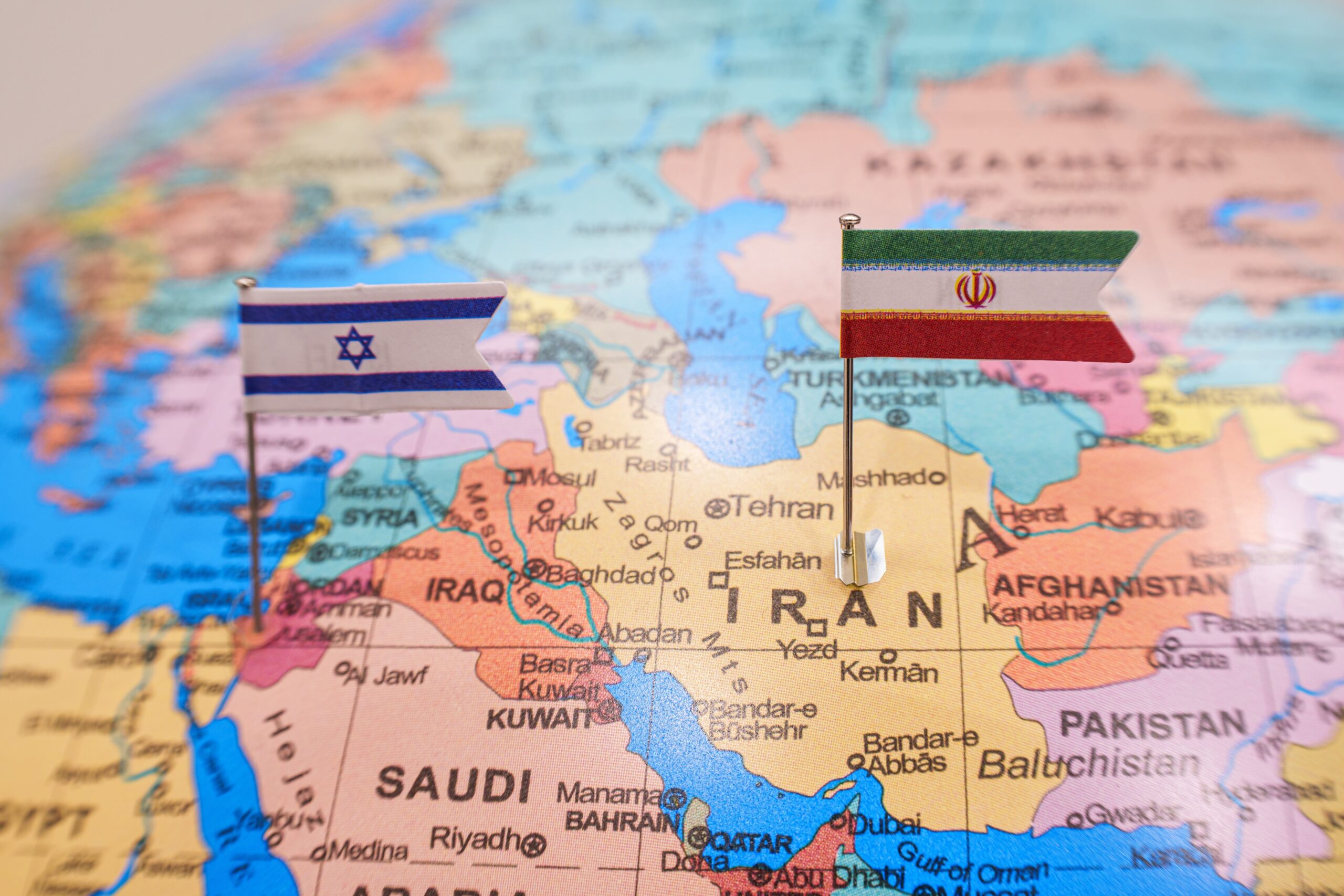
Iran has been targeting Israel for years (Image: Shutterstock)
Nuclear weapons capability
There is significant open-source evidence that Iran was developing nuclear weapons capability. This is broken down into three different categories:
- Highly enriching enough uranium for nuclear weapons
- Developing the technical knowledge to weaponise that enriched uranium
- Making the decision, once enough uranium has been enriched and technical knowhow has been achieved, to manufacture nuclear weapons
Read more: Three reasons Israel decided to act against Iran now
Highly enriched uranium
Many reports over many years have shown that Iran has been enriching uranium far beyond the three per cent enrichment level required for civilian purposes.
The initial stages of enriching uranium are harder than later stages. This means enriching uranium to 20 per cent, for instance, is much harder than going from 60 to 90 per cent.
In February this year, the International Atomic Energy Agency reported that Iran had increased its stockpile of highly enriched uranium by 150 per cent in the previous three months. Iran, it said, had enough enriched material to build seven nuclear bombs in just a few weeks, with minimal additional enrichment.
This came after a February 2023 report, which stated that IAEA inspectors found uranium particles enriched to 83.7 per cent, just shy of the 90 per cent needed to be considered “weapons-grade”, at Iran’s Fordow enrichment facility. These tiny traces were most likely an accidental byproduct of cascades of centrifuges in Fordow enriching uranium to 60 per cent, and don’t seem to have been mentioned again.
On May 31, 2025, an IAEA report stated that Iran had increased its stockpile of 60 per cent enriched uranium to 408.6kg, a large increase since its previous February report and enough for about nine nuclear weapons if further enriched to 90 per cent.
On June 10, 2025, Gen. Michael Kurilla, Chief of US Central Command, testified to Congress:
Should the regime decide to sprint to a nuclear weapon, it is estimated that current stockpiles and the available centrifuges across several enrichment plants are sufficient to produce its first 25 kg of weapons-grade material in roughly one week and enough for up to ten nuclear weapons in three weeks.
Twenty-five kilograms of weapons grade uranium is ‘standard’ for a nuclear weapon, which is why this figure was mentioned by Gen. Kurilla.
Achieving technical knowhow
Beyond having enough highly enriched uranium to build a nuclear weapon, a regime must also possess the technical knowledge to build such a weapon, should it wish to achieve nuclear weapons capability.
There is considerable evidence that Iran has achieved this.
First, there is boasting from Iranian officials:
- On July 17, 2022, Kamal Kharrazi, a senior adviser to Iran’s Supreme Leader Ayatollah Ali Khamenei, said, “Iran has the technical means to produce a nuclear bomb but there has been no decision by Iran to build one.”
- On July 18, 2022, former Iranian diplomat Amir Mousavi said, “Yes, Iran is capable [of producing a nuclear bomb] now.”
- On August 1, 2022, Mohammed Eslami, head of the Atomic Energy Organisation of Iran, reiterated Kharrazi’s comments, saying, “As Mr Kharrazi mentioned, Iran has the technical ability to build an atomic bomb, but such a program is not on the agenda.”
- On November 18, 2024, senior Iranian official Mohammad-Javad Larijani said, “If Europeans think we can achieve nuclear military capability within 48 hours, they are mistaken—we can do it in 24.”
- On May 26, 2025, former nuclear program chief Fereydoon Abbasi, since killed by Israel, said, “I said that we had reached the capability to build a [nuclear] weapon 15-20 years ago, but we had not built it for several reasons… So far, we have not received orders to build [a nuclear bomb]. If they tell me to build it, I will do it.”
Second, there is the evidence reported in Israeli and international media:
- In March 2024, Yediot Ahronot reported that three senior Israeli officials had said that Iran had recently taken “very concerning actions” towards trying to obtain all elements needed for a nuclear bomb. The article stressed, however, that “by some accounts those efforts have been going on for a while. The officials don’t believe Iran is currently on the cusp of obtaining a nuclear device.”
- In June 2024, ambiguous intelligence emerged related to computer modelling and other research by Iranian scientists that could be related to nuclear weapons.
- The Biden Administration privately warned Iran that month about its suspicious research and development activities over recent months.
- Netanyahu’s former national security adviser Yaakov Nagel also claimed in June 2024 that several dozen Iranian scientists have been working on technical processes related to building a nuclear device.
- In February 2025, the New York Times reported, “New intelligence about Iran’s nuclear program has convinced American officials that a secret team of the country’s scientists is exploring a faster, if cruder, approach to developing an atomic weapon if Tehran’s leadership decides to race for a bomb… The intelligence was collected in the last months of the Biden administration… The intelligence assessment warned that Iranian weapons engineers and scientists were essentially looking for a shortcut that would enable them to turn their growing stockpile of nuclear fuel into a workable weapon in a matter of months, rather than a year or more — but only if Tehran made a decision to change its current approach.”
- On June 10, 2025, the National Council of Resistance of Iran (NCRI) claimed that a structured nuclear weapons program had been restarted by Iran in 2009 called the “Kavir Plan”. Kavir was to replace the Amad Plan, which was discontinued in 2003 in the wake of the US invasion of Iraq. The plan allegedly advanced nuclear weapons development through Iran’s Organisation of Defensive Innovation and Research (SPND), using satellite-launching missile programs as a cover. NCRI alleged that the Kavir plan operationalised warhead design, missile integration and high-explosive testing.
- On June 12, 2025, for the first time in nearly 20 years, the IAEA declared Iran in breach of its non-proliferation obligations. “Iran’s many failures to uphold its obligations since 2019 to provide the Agency with full and timely cooperation regarding undeclared nuclear material and activities… constitutes non-compliance with its obligations under its Safeguards Agreement with the Agency,” it said, adding, “the Agency is not able to verify that there has been no diversion of nuclear material required to be safeguarded under the Agreement to nuclear weapons or other nuclear explosive devices” and “the Director General’s inability… to provide assurance that Iran’s nuclear programme is exclusively peaceful gives rise to questions that are within the competence of the United Nations Security Council.”
- On June 13, the day of the Israeli attack, a “senior Israeli source” claimed that Iran had acquired the components, including a trigger, for at least one nuclear device.
- On June 15, the Times of Israel reported that Iran “had conducted successful experiments in the design process of a nuclear weapon.”
- On June 18, 2025, the Economist reported on the intelligence dossier Israel had shared with the US regarding Iran’s nuclear program. This included the following allegations:
- An Iranian scientific team had hidden some uranium of unclear enrichment status.
- ‘The scientists have accelerated their work and were about to meet commanders of Iran’s missile corps, apparently to prepare for the future ‘mating’ of a nuclear warhead with a missile.”
- Around 2019, a “Special Progress Group” under the leadership of former nuclear weapons program head Mohsen Fakhrizadeh, assassinated by Israel in November 2020, was established to ensure more rapid weaponisation if the decision was made, and that it stepped up its research towards the end of 2024.
- On June 19, 2025, the New York Times reported that Mossad had provided materials claiming Iran could technically achieve a nuclear weapon in 15 days. According to the New York Times: “US officials believe Iran has the knowhow to make an older-style nuclear weapon, one that could be put together far faster than the more sophisticated designs Tehran has considered in the past.”
Read more: AIJAC applauds American intervention against Iranian nuclear program
A decision to manufacture a nuclear weapon?
Supreme Leader Ali Khamenei hasn’t publicly announced that Iran should pursue nuclear weaponry, and the position of foreign intelligence agencies and the IAEA is that Iran has not yet made the decision to do so. However, Israel claims that Iran has changed its previous position since the Hamas mass terror attack on Israel October 7, 2023 and Israel’s subsequent destruction of Teheran’s key proxies and the fall of the allied Assad regime, and now is actively seeking to have, at the very least, ready-to-assemble nuclear weapons.
On June 19, the BBC reported that Israel claimed that Iran had created a uranium metal core – the part of the nuclear bomb that explodes when surrounding high-explosive conventional explosives detonate and make it implode.
On June 21, Yediot Ahronot reported that, after the decimation of Hezbollah and the fall of the Assad regime in Syria,
Khamenei gave his scientists approval to accelerate the activities of the ‘nuclear weapon group’, tasked with developing the nuclear explosive device itself and, subsequently, building the bomb or warhead to be mounted on a surface-to-surface missile. According to Israel’s intelligence community, the activity of the weapon group significantly accelerated since the end of 2024. It operated through sub-groups of scientists, each working on a different component or material used in the nuclear explosive device. The goal was to reach a point where all the sub-groups would complete their tasks, and then within a few short weeks, it would be possible to enrich uranium to weapons-grade and assemble a rudimentary explosive device. In such a scenario, Iran would cross the nuclear threshold and could threaten its enemies with an atomic weapon—especially if it were to conduct a successful nuclear test.
On June 15, 2025, Israeli military correspondent Doron Kadosh had reported on this group:
The Iranians recruited the best scientists for the secret program – they divided them into several working groups. Each working group was given a different project to work on, which is one of the components of the weapons group.
These are scientific, technological projects, the pursuit of which leaves no doubt: those who deal with these particular issues are not looking for anything other than nuclear weapons.
The scientists’ working groups began working about a year and a half ago – in late 2023-early 2024, that is: after October 7.
The conclusion reached in Israel: The Iranians made the decision to obtain the components of a nuclear bomb after the Hamas attack on the [Gaza] Envelope.
In recent months, there has been a significant development in the secret program, which was exposed to Israeli intelligence along the way. The scientists have reached the experimental stage, and have begun to conduct successful experiments on the components they were entrusted with.
In Israel, they understood: reaching the testing stage is critical, and the fact that the tests are defined as successful brings the Iranians significantly closer to the point where they are a decisive step away from being able to assemble a bomb.
Intelligence sources made it clear to the political echelon: We are entering the dangerous space where Iran is within striking distance of a bomb. If it decides – there is a probability that it will succeed in reaching the bomb in just weeks, and another warning was sounded in closed rooms: We may not know everything, and Iran is in an even more advanced state than we think.”
Ballistic missile threat
Iran was also allegedly planning to quickly develop thousands of heavy ballistic missiles that would have overwhelmed Israel’s air defence systems – even without being armed by nuclear warheads.
On June 13, the day Operation Rising Lion was launched, Netanyahu told Fox News that one of the reasons Israel chose to strike, aside from the nuclear program, was Iran’s “rush to increase their ballistic missile arsenal to the capacity that they would have 3,600 weapons a year… Within three years, 10,000 ballistic missiles, each one weighing a ton, coming in at mach 6, right into our cities, as you saw today… and then in 26 years, 20,000 [missiles].”
Ben-Yishai reported from a conversation with a senior Israeli officer that the decision to act…
did not stem primarily from fear of an imminent nuclear breakout, but rather from the intelligence insight that Iran is preparing to rapidly produce thousands of heavy, long-range ballistic missiles.
The quality and accuracy of these missiles — some of which have manoeuvrable warheads — and especially their quantity, would allow a significant portion of them to ‘saturate’ and penetrate our air defences, even if all Arab and Western countries joined the defensive effort. The Iranian intention, as revealed in reliable intelligence materials received by the West, was to produce dozens of such missiles per month, alongside a large number of launchers — without which the missile is a useless shell, and to reach, within a decade, an arsenal of about 11,000 missiles, each with a warhead containing between 400 and 1,000 kilograms of explosive material.
It is notable that about ten per cent of the missiles fired by Iran at Israel between 13 and 23 June were not intercepted. Israel’s multi-layered anti-missile system, as sophisticated as it is, has limits.
On June 25, Netanyahu said Israel had resolved “two existential threats — the threat of destruction via nuclear weapons and the threat of destruction via 20,000 ballistic missiles.”
In February, two ships carrying 1000 tons of chemical precursor to solid propellant docked in Iran, indicating efforts to rebuild its missile stockpile. The Wall Street Journal reported on June 5 that Iran had ordered thousands of tons of ammonium perchlorate from China several months prior, enough to power up to 800 ballistic missiles.
Read more: The Iran nuclear deal (JCPOA)

